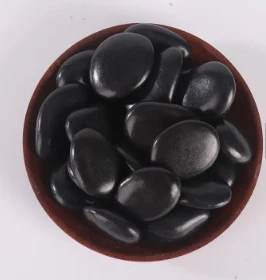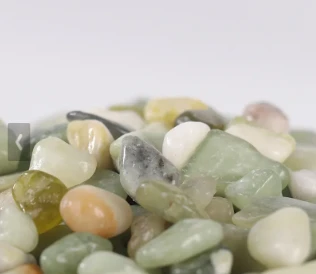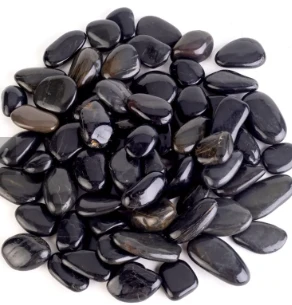Products
Cobblestone is a classic and durable paving material made from naturally rounded stones, often sourced from riverbeds or quarries. Known for its timeless aesthetic, cobblestone adds a charming, rustic appeal to both residential and commercial landscapes.
Versatile Applications: Cobblestones can be used in various settings, including driveways, walkways, patios, and public spaces. Their adaptability makes them suitable for both traditional and contemporary designs, enhancing the visual interest of any area.
Durability and Longevity: One of the standout features of cobblestone is its exceptional durability. These stones can withstand heavy foot traffic and harsh weather conditions, making them a reliable choice for high-traffic areas. When properly installed, cobblestone can last for decades, often improving in character over time.
Eco-Friendly Option: Cobblestones are a natural product, making them an environmentally friendly choice. They allow for water drainage, reducing runoff and promoting a healthier ecosystem. Their installation often requires fewer resources compared to other paving materials, further supporting sustainable practices.
Easy Maintenance: Cobblestone surfaces are relatively low maintenance. Regular sweeping and occasional power washing are usually sufficient to keep them looking pristine. Any displaced stones can be easily repositioned, ensuring the surface remains even and safe.
Cobblestone is a beautiful, durable, and eco-friendly choice for a wide range of paving applications, making it a preferred option for those looking to enhance their outdoor spaces with timeless elegance.
What Is A Cobblestone Made Of?
Cobblestones are typically made from naturally occurring stones, often sourced from riverbeds, quarries, or coastal areas. The most common types of materials used to create cobblestones include:
1. Granite: Known for its durability and resistance to weathering, granite cobblestones are popular for their strength and aesthetic appeal.
2. Basalt: This volcanic rock is dense and hard, making basalt cobblestones highly durable and suitable for high-traffic areas.
3. Limestone: Softer and easier to work with, limestone cobblestones offer a unique texture and color variations, adding charm to landscaping.
4. Sandstone: Known for its warm colors and natural beauty, sandstone cobblestones are often used in decorative applications.
5. Slate: This metamorphic rock provides a distinctive look with its layered appearance and comes in various colors, making it a stylish option.
These stones are shaped through natural processes or mechanical means, often resulting in rounded or rectangular forms. The choice of material affects not only the appearance but also the durability and maintenance of the cobblestone surface.
Is Cobblestone Stronger Than Stone?
The strength of cobblestone compared to other types of stone depends on several factors, including the specific type of stone being compared and its intended use. Here are some points to consider:
1. Material Composition: Cobblestones are usually made from durable natural stones such as granite, basalt, or limestone. For instance, granite cobblestones are extremely strong and resistant to wear, making them suitable for heavy traffic areas.
2. Shape and Installation: Cobblestones are typically rounded or irregularly shaped, which can help distribute weight and reduce the likelihood of cracking under pressure. The way they are installed—interlocking with sand or gravel—can also contribute to their overall strength and stability.
3. Comparative Strength: When comparing cobblestones to cut or quarried stone, the latter may have a more uniform shape and potentially higher compressive strength. However, cobblestones can be more resilient in certain applications due to their ability to flex slightly without breaking.
4. Use Case: For paving and outdoor surfaces, cobblestones are often considered a robust choice because they can withstand heavy loads and weathering. However, for structural applications (like walls or foundations), other stone types may be preferred for their specific properties.
While cobblestones are generally strong and durable for paving applications, the strength comparison depends on the specific stone type and intended use.









